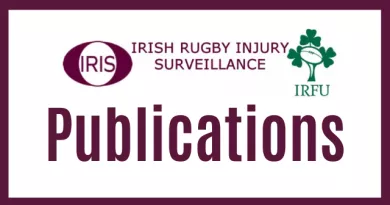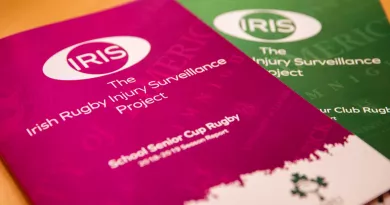
AIMS
- To develop and implement an injury surveillance system for various levels of the domestic Rugby Union game in Ireland which allows for the collection, tracking and trend analysis of injury patterns (incidence, nature and severity), to identify possible injury casual factors and prevention strategies.
- To enhance the health and welfare of Rugby Union players across the domestic game in Ireland by providing information on injury patterns that can impact on IRFU policy regarding injury prevention measures.
IRIS is the first long-term injury surveillance research project within amateur Rugby Union in Ireland. The research records the incidence, type, nature and severity of both match and training injuries occurring across the amateur game in Ireland.
By monitoring this information, injury trends may emerge which will aid in the development and implementation of future evidence-based injury prevention strategies in order to minimise injury risk and enhance player welfare.
Rugby Union is a highly popular team sport with global participation rates increasing by ~20% (CIBS, 2011). With mass participation and rising competitiveness, the increasing prevalence and associated cost of Rugby-related injuries among both professional and amateur, adult and underage players, is of growing concern (Fuller et al., 2008; Freitag et al., 2015; O’Rourke et al., 2006; RFU, 2015). Such injury incidence have been shown to differ between playing levels in Rugby Union. A meta-analysis on injuries in senior men’s professional Rugby Union found the overall incidence of injury in senior men’s professional Rugby Union is approximately 81 per 1,000 player hours (Williams, 2013), which is three times greater than among underage players (26.7 per 1,000 hours, Freitag et al., 2015). Within the context of club and schools Rugby Union in Ireland, the incidence, type, nature and severity of injury is unknown, as are the quality of the surveillance systems in place at these levels of the game. Thus, a high quality injury surveillance and prevention programme is required. Building on these accurate injury data we can then investigate important related research question such as:
- Player loading
- Concussion treatment practices
- ENGAGE injury reduction intervention & coach education
- Breast health
- REDs injury and illness prevalence
- Training injury surveillance
- Tackle behaviour change impact analysis
- Artificial surface injury analysis




